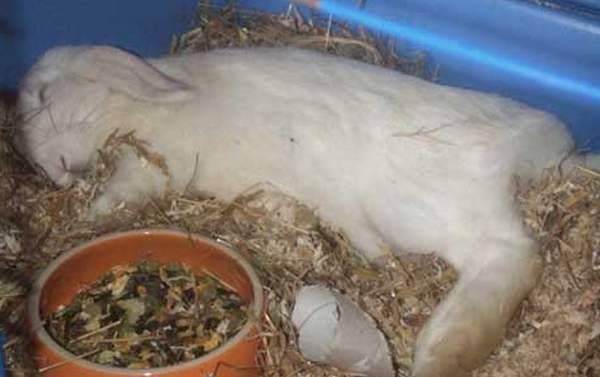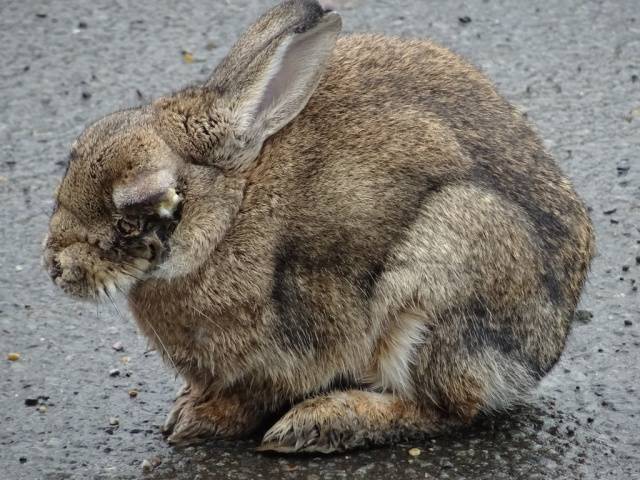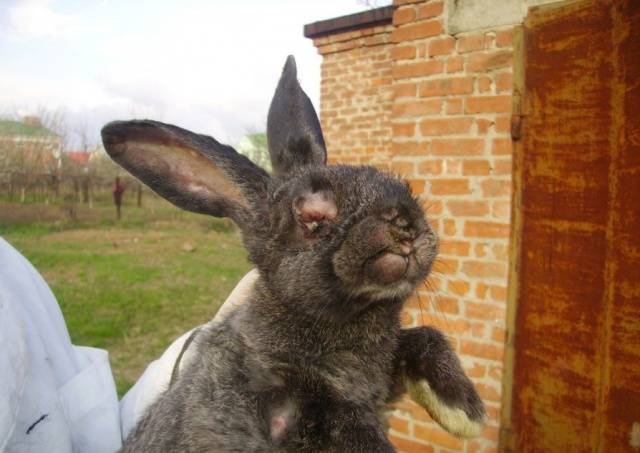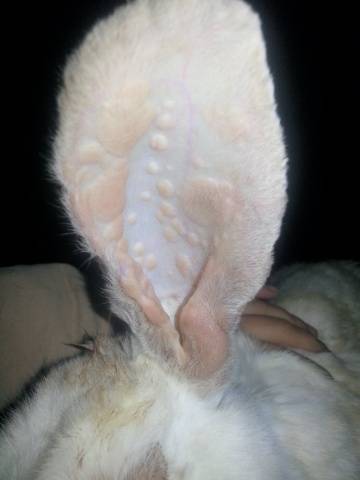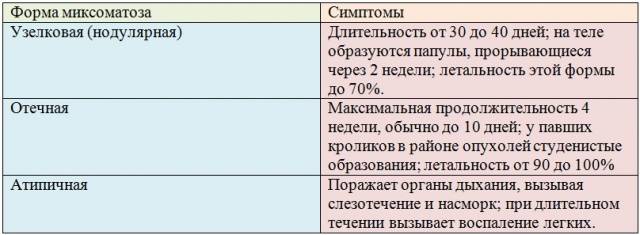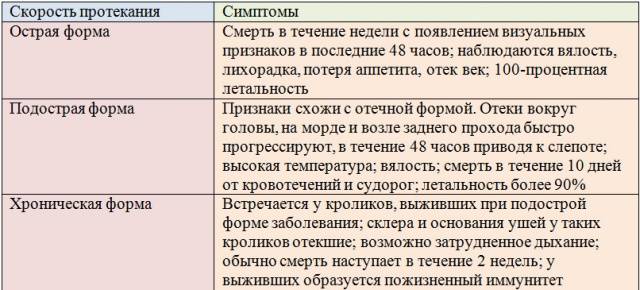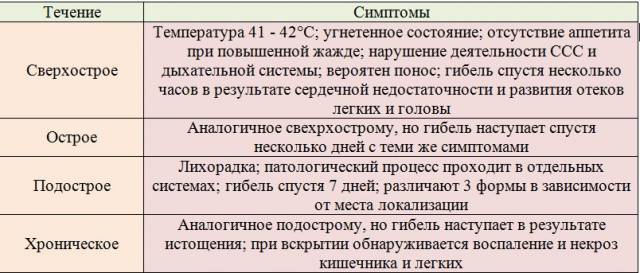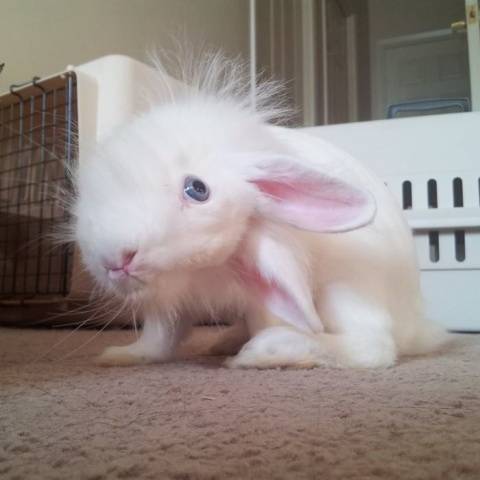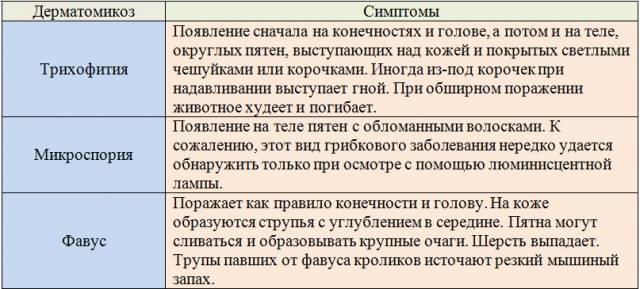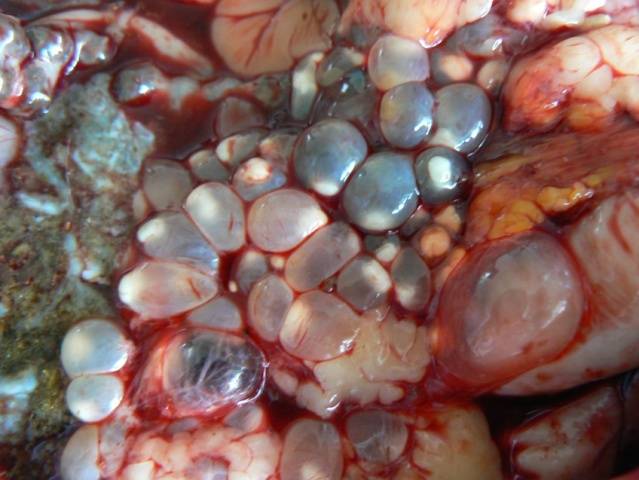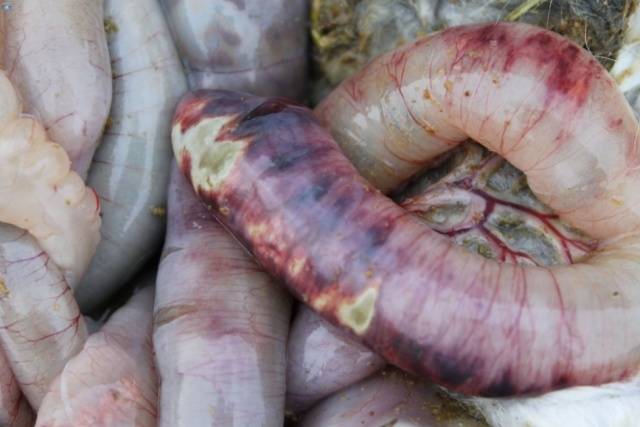Content
Rabbits would be a great investment of money and a very profitable business, if not for the fact that the mortality of these animals often reaches 100%, bringing only losses to the owner. Before starting rabbits, it is better for a beginner to figure out in theory what to feed rabbits so that they do not have bloating, and what are the diseases of rabbits and their treatment.
Like any other animal species, rabbit diseases can be divided into infectious, invasive and non-infectious.
The main economic damage to the owners of rabbit farms is caused by infectious diseases, especially the scourge of all rabbit breeders: viral hemorrhagic disease of rabbits and myxomatosis. Also, animals often die from bloating, which is actually not a disease, but a symptom of a number of diseases of the gastrointestinal tract.
VGBK and myxomatosis
Both of these diseases are extremely contagious with a high mortality rate. With HBV, mortality most often reaches 100%.
All the so-called folk methods of curing these diseases are symptomatic relief of the sick rabbit's well-being. As a rule, they "work" with myxomatosis, where the mortality rate is lower than with IHD.
In fact, the treatment of viral diseases has not been developed even for humans. There are only immunostimulating drugs that help the body to cope with the virus through its own immunity. The virus does not die, but remains in living cells of the body, which is why the surviving rabbits for a long time are a source of infection for healthy animals.
Viral hemorrhagic disease
It is caused by a virus that infects only the European rabbit, from which the domestic rabbit originates. Accordingly, domesticated rabbits are also susceptible to this disease.
The incubation period for the virus is no more than 48 hours. The course of the disease can be hyperacute, acute and subacute.
With subacute, symptoms of the disease can be noticed:
- lethargy;
- lack of appetite;
- heat;
- cramping;
- death.
In case of a subacute course of the disease, you can try to stretch the rabbit by injecting it with an immunostimulating serum, but this can be done only if the rabbit lives alone, being a pet. If there are several heads, this action does not make the slightest sense. Even if the rabbit survives, it will be a carrier of the infection, capable of infecting not only rabbits in neighboring cages, but even on neighboring farms.
With a hyperacute and acute course of the disease, there are no symptoms. The rabbit just suddenly falls and after several agonizing movements freezes.
Occasionally, bleeding from the nose, mouth, or anus may be noticed in dead rabbits.
The mortality rate of rabbits with HBV is from 50 to 100%. Moreover, according to the observations of practicing veterinarians, the last figure is much closer to the truth.
With any sudden death of a rabbit, it is imperative to make an analysis for the presence of HBV, since the virus is extremely resistant to adverse environmental conditions and can persist for up to six months at room temperature and for more than 9 months at temperatures close to 0.
The virus is transmitted by almost any means:
- through inanimate objects: car wheels, inventory, staff clothing, shoes;
- Contact with an infected rabbit or contaminated feces
- through farm products: meat, skins, wool;
- through people in contact with infected animals;
- through rodents, blood-sucking insects and birds.
There is no cure for this disease. The only way to prevent HBV is to prevent the disease.
First of all, you must follow the vaccination schedule. Rabbits do not develop immunity to HBV, so vaccinations must be repeated every six months. The first three times the HBV vaccine is injected according to a special scheme:
- 45 days from birth;
- 115 days from birth;
- Six months after the second vaccination.
Further, the vaccine is always pierced every 6 months.
Prevention measures for HBV:
- quarantine of a newly acquired rabbit for 5 days;
- disinsection of the premises where rabbits are kept;
- keeping rabbits indoors, as on the street they are more likely to meet a carrier of the virus;
- purchase of feed from areas free of VGBK;
- special clothing and footwear for working with rabbits;
- systematic treatment of cells and cellular inventory with disinfectants.
When a disease occurs on the farm, all livestock of animals must be slaughtered.
Myxomatosis
The homeland of the virus is South America, from where it was specially brought to Europe to fight the bred wild rabbits that did not have immunity to the disease. As always, they did not think about the consequences.
The virus is transmitted through direct contact with a sick animal or with the help of blood-sucking insects, which do not care who bites: a wild rabbit or a domestic one. As a result of the rapid spread myxomatosis and the high virulence of the virus in Europe, it came to panzootic.
The myxomatosis virus is quite stable in the external environment. In the corpse of an animal, it can be stored for a week, at a temperature of about 20 ° C in dried rabbit skin for up to 10 months, in an external environment at a temperature of 9 ° C for 3 months. When heated to 55 ° C, the myxomatosis virus is inactivated after 25 minutes. Does not withstand the virus and disinfection solutions.
The incubation period of the disease can be 20 days long and largely depends on the rabbit's immunity.
Treatment with folk remedies for such a dangerous disease as myxomatosis is essentially a profanation. Those animals survive, which themselves would cope with the virus. But "healers" endanger not only their own rabbits, but also neighboring animals.
Actually, all treatment of the disease is reduced simply to alleviating the condition of the rabbit during the illness, pain relief and waiting for the animal to survive or not.
The requirements of veterinary services when myxomatosis appears on the farm is the slaughter of livestock.
Forms of myxomatosis
Myxomatosis can be edematous or nodular. The first begins with conjunctivitis and swelling of the head.
The head takes on a characteristic shape called the "lion's head". At the same time, hard formations appear in the area of the head and anus.
With a nodular form of the disease, hard reddened bumps appear on the rabbit's body. Owners usually notice these masses on the ears, as there is no thick hair on the ears and the nodules are clearly visible.
Both forms are characterized by a sudden rise in body temperature of rabbits up to 40-41 °.
In addition to the two "classical" forms, as a result of the mutation of the myxomatosis virus, a third appeared: an atypical form of the disease, characterized by the fact that it affects the respiratory organs. As a result, this form of the disease can be easily confused with bronchitis, pneumonia, or pneumonia. However, with a long course, it is pneumonia that causes this form of the disease.
According to the rate of flow, myxomatosis is also divided into forms.
Treatment of myxomatosis
As already mentioned, myxomatosis cannot be treated, and experienced rabbit breeders advise to slaughter the animals immediately, but if the rabbit lives alone in an apartment and is a pet, you can try to help him cope with the disease. If the rabbit is left to live alone, then the fact of the disease will not play any role.
To alleviate the condition of the animal, broad-spectrum antibiotics are used to destroy the secondary infection, which usually "sits" on open purulent wounds. Injections of immunostimulating drugs are required. To facilitate breathing, use drops from the common cold. The eyes are washed with saline and instilled with antibiotic eye drops.
At the same time, in contrast to VGBK, myxomatosis can be dealt with with little blood. Recovered rabbits acquire immunity to myxomatosis for life, while remaining, however, carriers of the virus.
To get rid of this disease, it is enough to once inoculate 30-day-old rabbits with the Rabbiwak-B vaccine, made on the basis of a live weakened myxomatosis virus.
In the case of using a bivalent vaccine against myxomatosis and HBV, the vaccine is pierced according to the vaccination scheme against HBV.
We must also remember that vaccination does not give a 100% guarantee. Sometimes there is a "breakdown" of the vaccine and the rabbit falls ill with myxomatosis, albeit in a milder form.
Rabbit breeders often have a question whether it is possible to eat the meat of rabbits with myxomatosis. There are no restrictions. This disease is not dangerous for humans. Therefore, you can eat. But disgusting.
Other infectious diseases
In addition to myxomatosis and HBV, rabbits also suffer from rabies caused by the virus. Since the rabies virus is transmitted only with the saliva of a sick animal, it is enough to exclude access to the cages with rabbits of mice and rats in order to be practically calm about rabies. For a guarantee, all livestock can be vaccinated once a year.
Bacterial diseases
Bacterial diseases in rabbits and their symptoms are often confused with non-communicable diseases. This is the particular danger of pasteurellosis or salmonellosis.
Purulent conjunctivitis with pasteurellosis can be confused with advanced dacryocystitis, nasal discharge is attributed to a draft, and diarrhea to eating unusual food.
The edematous form of pasteurellosis, in general, is very similar to rabies.
Symptoms of pasteurellosis in four different forms of the course of the disease
In this case, the subacute and chronic forms of the disease are divided into types according to the place of localization of pasteurella:
- in the intestinal form of the disease, the symptoms are dark diarrhea mixed with blood, lack of appetite, thirst;
- with the chest form of pasteurellosis, purulent discharge from the nose, dry cough, which later turns into moist and shortness of breath, are observed;
- with the edematous form of the disease, the rabbit has saliva from the mouth due to difficulty swallowing and heart failure. But this is already a consequence of edema of the limbs, abdomen, tongue, larynx, eyes, neck and other parts and organs of the body.
Most often, rabbits have a breast form of pasteurellosis. Since this bacterium is always present in a living organism, but is not able to develop with normal immunity, pasteurellosis can be considered a sign of a failure of immunity. Immunity usually decreases against the background of stress and an unsanitary state of cells.
Pasteurella can also affect the inner ear, causing what is known as a twisted neck.
Pasteurellosis is transmitted by contact of a healthy rabbit with a sick animal. For the prevention of pasteurellosis, it is necessary to systematically treat the cells with disinfectant solutions.And it is better to use several methods at once. The cells can be treated first with a blowtorch, burning out the crawling insects, then with disinfectant solutions, destroying particularly persistent viruses and bacteria. In addition, it is good to carry out pest control of the premises from flying insects.
To prevent pasteurellosis, rabbits can be vaccinated with one of the vaccines: Pasorin - OL or CUNIVAK PAST. Vaccination is carried out according to the schemes that are separate for each of the vaccines.
If the rabbits do get sick with pasteurellosis, then they will have to be treated with antibiotics for a course of 14 to 30 days. After treatment, due to dysbiosis, the rabbit may develop diarrhea or bloating.
The treatment regimen for pasteurellosis is prescribed by a doctor. It is not recommended to treat the disease with alternative methods. Pasteurella is also a parasite in humans.
Since pasteurellosis can be transmitted to humans, the meat of sick rabbits should not be eaten. The corpses of animals are burned. In the village where pasteurellosis was found, quarantine is announced.
Invasive diseases of rabbits with a photo, symptoms of diseases and their treatment
Some of the invasive diseases are diseases of rabbits that are dangerous to humans. In particular, this is cysticercosis - one of the types of helminthiasis and dermatomycosis, popularly combined under the general name "lichen".
With regard to dermatomycosis, the people are partly right, since all types of these fungi are treated in the same way.
Symptoms of various types of dermatomycosis
Fungi are bad in that no matter how grass they are, they easily return, since they are transmitted not only from animal to animal, but also from object to animal. Or per person.
When choosing what to treat a surface infected with a fungus, one has to take into account that it is necessary to process not only the room, but also the animal. Accordingly, the formulation must be such as to kill the fungus without harming mammals.
A possible option for processing the premises is shown in the video.
In the video, the barn is treated, but in the case of dermatomycosis, the type of animals does not matter.
Helminthiasis
Depletion of an animal with increased appetite is considered a common sign of the presence of worms. But worms are not only intestinal. With a pulmonary form of helminthiasis, a rabbit may look good and only cough. And if there are parasites in the liver, the animal will show signs of hepatitis, but not exhaustion.
Of all helminthiases, cysticercosis is the most dangerous for humans. The description of this disease is similar to the symptoms of peritonitis and hepatitis. Cysticercosis is caused by the larvae of carnivorous tapeworms, which parasitize everywhere in the rabbit's body, including the brain.
For humans, cysticercosis is dangerous because one of the types of these larvae are the larvae of the pork tapeworm, the final owner of which is a person. Infection occurs when eating poorly processed meat.
The second route of infection: airborne eggs of mature larvae, which the rabbit excretes with feces. In this case, a person becomes an intermediate host for the pork tapeworm, and the Finnish stage of the pork tapeworm passes already in the human body, leading to serious illness or death.
Bloating in rabbits
It is not a separate disease. It is a symptom of a number of other diseases, sometimes infectious, sometimes non-infectious. More often non-infectious.
Among infectious diseases, bloating is caused by coccidiosis and enteritis.
Coccidiosis is a common invasive disease in several species of mammals and poultry. As a rule, signs of coccidiosis appear in rabbits after weaning them from their mother.Therefore, immediately after weaning, the rabbits must be drunk with coccidiostatics according to the instructions attached to each type of preparation.
For non-infectious tympanic infections caused by a recent course of antibiotics, pre- and probiotics are given to rabbits. In the case of mild colic, the animal can be driven a little so that gases come out of the intestines.
But in any case, it is necessary that the cause of tympania be established as soon as possible by a veterinarian. In some cases, the bill can go to hours. With problems in the gastrointestinal tract, part of the intestine may even begin to die off.
Therefore, rabbit owners often simply slaughter sick animals.
Conclusion
Rabbits are very gentle animals, susceptible to many diseases, and often die simply from inappropriate food. But if you are not afraid of vaccinations and medicines, preaching environmental friendliness and naturalness, then the losses among the rabbit population can be reduced to a minimum.
